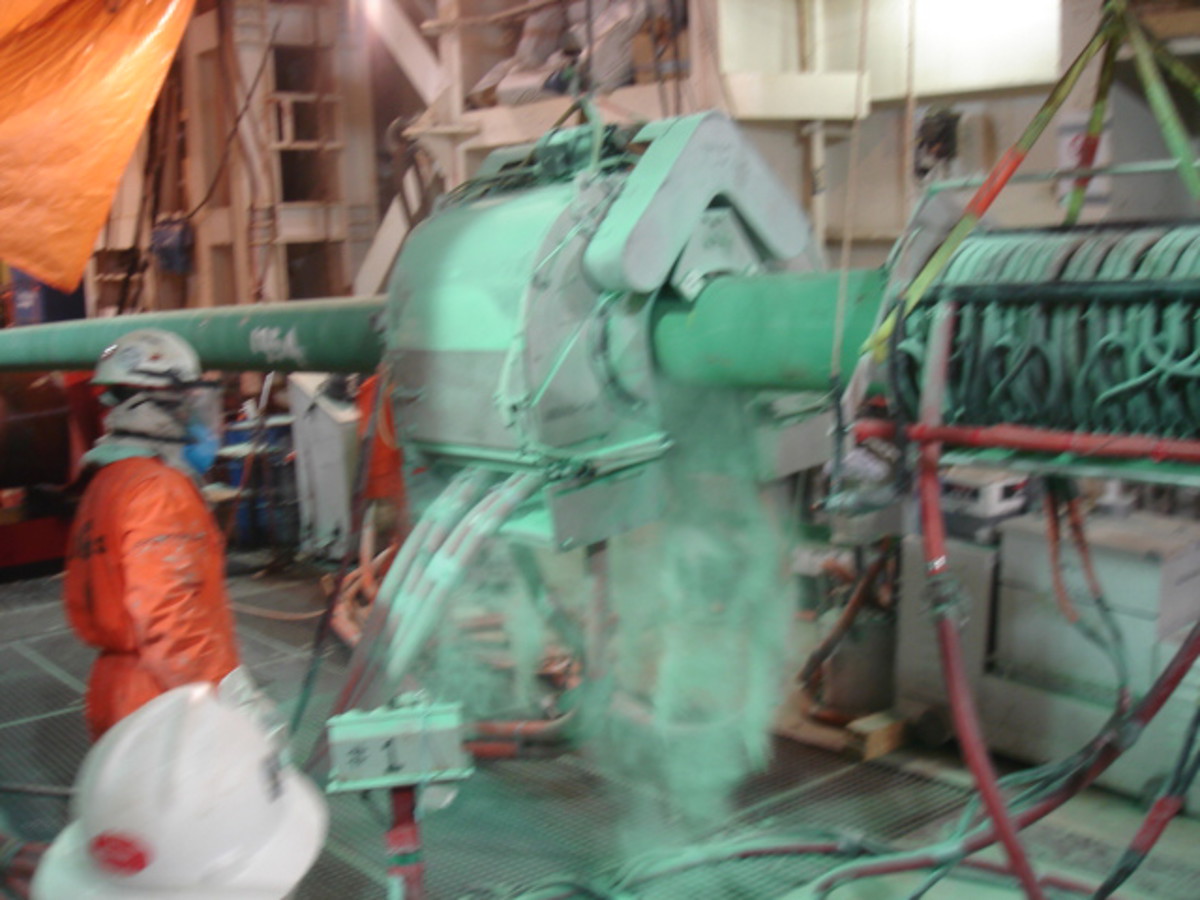Flash fire in field joint coating station
- Safety Flash
- Published on 30 April 2006
- Generated on 5 January 2026
- IMCA SF 05/06
- 2 minute read
Jump to:
A Member has reported the occurrence of a flash fire onboard a pipelay vessel.
What happened?
A fusion bonded epoxy (FBE) powder used in the pipeline coating process escaped from a coating machine and came into contact with a naked flame. The flame travelled in this cloud of powder towards the coating machine and set this machine on fire. One crew member was standing next to the machine and sustained small first and second degree burns to the left face, neck and forearm.

The company’s investigation revealed the following:
- insufficient extraction and sealing on the FBE machine used resulted in FBE dust releases upon each opening of the machine.
- coating repair in the vicinity of the machine required the use of a burning torch; . the area was relatively open and the ignited dust ‘only’ resulted in a flash fire. In a more congested area, it could have formed a dust explosion with associated damage from explosion overpressure; . other types of dust (e.g. from grinding) could pose a similar hazard if brought in contact with a naked flame.
The company made the following recommendations:
- Immediately report excessive FBE powder releases from coating machines and undertake any necessary repairs immediately.
- ensure there are no naked flames or smoking in the areas where flammable dust is gathered.
- never clean equipment containing flammable dust by means of air blower – use an explosion proof vacuum cleaner.
- never disconnect FBE hoses from the machine to use them for spraying FBE; use only approved equipment for spraying FBE.
- clean the area at the earliest possible opportunity.
IMCA Safety Flashes summarise key safety matters and incidents, allowing lessons to be more easily learnt for the benefit of the entire offshore industry.
The effectiveness of the IMCA Safety Flash system depends on the industry sharing information and so avoiding repeat incidents. Incidents are classified according to IOGP's Life Saving Rules.
All information is anonymised or sanitised, as appropriate, and warnings for graphic content included where possible.
IMCA makes every effort to ensure both the accuracy and reliability of the information shared, but is not be liable for any guidance and/or recommendation and/or statement herein contained.
The information contained in this document does not fulfil or replace any individual's or Member's legal, regulatory or other duties or obligations in respect of their operations. Individuals and Members remain solely responsible for the safe, lawful and proper conduct of their operations.
Share your safety incidents with IMCA online. Sign-up to receive Safety Flashes straight to your email.